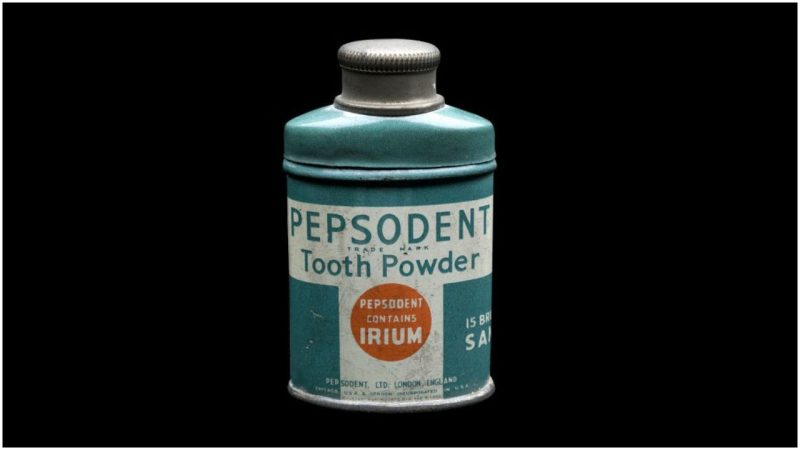Just over 100 years ago, you woke up in the morning, maybe changed your clothes, and went about your business, whether that was milking cows or working in a factory. You had breakfast, but you didn’t brush your teeth. You went to sleep at the end of the day—again without brushing your teeth. Oral hygiene just wasn’t a thing back then. It took an adman to change the way we think about our teeth.
Dubious nutrition had always wreaked havoc on the teeth of early explorers and settlers in the United States, even around the relatively prosperous turn of the 20th century, as evidenced by novelist Laura Ingalls Wilder and her daughter, Rose, in their series Little House on the Prairie. Dirt poor, both women had terrible teeth, as did many other Western pioneers. The situation wasn’t much better in urban environments, with the rise, availability, and popularity of this new and irresistible thing called packaged sugary foods, such as Oreos, which were invented in 1912. Add to this the fact that few people back then brushed their teeth and you have a nation of cavity-filled mouths with missing molars. It was so bad that the U.S. Army called poor dental hygiene a national security risk when it started drafting men for World War I, noting that so many recruits had rotting teeth.
Enter into this equation a man who had created a better toothpaste, Pepsodent. He needed help not just marketing his product but persuading the public to start brushing their teeth, every day. In effect, he needed a campaign to persuade people to change their ways.
Claude Hopkins was a well-known advertising executive in the early 1900s. Called by many the father of modern marketing, the adman had long-lasting indelible successes with brands that are still industry leaders more than 100 years later, such as Quaker Oats, Goodyear Tires, and Van Camp pork and beans. Hopkins knew he had to make people want to brush their teeth. But how?
Hopkins did his research. In one dental book, he found reference to what all of us now know from our own dental appointments as plaque. What it feels like, if you haven’t had your teeth professionally cleaned in a while, is a film. Hopkins connected the feel of clean teeth with beauty.
Removing the film—with toothpaste—would make your teeth feel clean and look pretty. Appealing to vanity is always the best way to sell a product. And so the Pepsodent ads read: “FILM, a dangerous coating that robs teeth of their whiteness.” The ad promised “a way to remove it that quickly restores brilliance.” The tagline for the product: “Pepsodent: The Special Film-Removing Dentifrice.” The key for sales was repetition: this was something you needed to do every day. It was a relatively inexpensive and quick way to improve yourself. “Run your tongue across your teeth” was another famous Hopkins line.
The campaign was an immediate hit, as noted by Charles Duhigg in his best-seller The Power of Habit. Suppliers could not keep up with demand. Pepsodent became one of the best-selling products of the decade and the best-selling toothpaste for more than 30 years. The 1957 jingle became an unshakable earworm: “You wonder where the yellow went, when you brush with Pepsodent.”
While the advertisement appealed to the customer’s vanity, the product offered a “reward,” Duhigg noted in his book. A sudsy experience that made the user feel like he was doing something and a mint flavor that left his mouth feeling refreshed.
Pepsodent contained citrus acid, mint oil and other flavors that created the now-familiar tingly feeling. While neither was crucial to the product’s efficacy, they were both triggers to make people want to brush their teeth. “There’s no cleaning benefit, but people feel better when there’s a bunch of suds around their mouth,” a toothpaste brand manager told Duhigg. “Once the customer starts expecting that foam, the habit starts growing.”
A decade after the Pepsodent campaign, 65 percent of the American population brushed their teeth. In an uplifting example of a product truly improving people’s lives, by the time the U.S. Army began recruiting for World War II, it no longer had to worry about the health of young men’s teeth.
(Another famous Pepsodent advertising campaign was a neon sign of a girl in a swing that hung over Times Square in the early 1930s and that was re-created for the climatic scene of the 2005 remake of King Kong.)
Pepsodent was the best-selling toothpaste in the U.S. for a time but the market was since inundated with innumerable toothpaste offerings. While Pepsodent still makes it on the top 10 brands in today’s crowded marketplace, the best-selling brand is Colgate.
